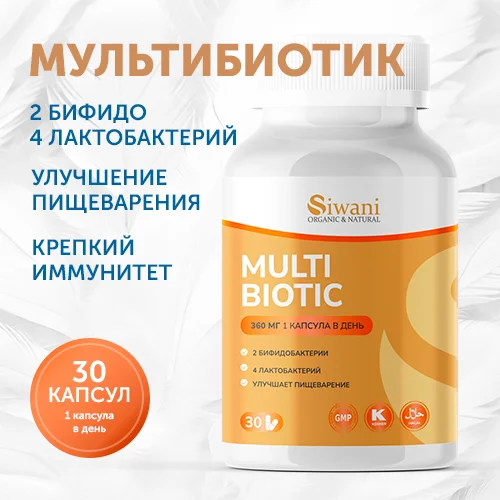Lactobacillus casei and Lactobacillus plantarum: A Comparative Analysis
Lactobacillus casei and Lactobacillus plantarum are both probiotic species, but they differ in their origins and properties. L. casei is commonly isolated from infant stools, while L. plantarum is often found in fermented foods like sheep milk and vegetables. These species have been extensively studied for their potential health benefits.
In this comparative analysis, we will delve into the genome sequences, antibiotic resistance profiles, viability and growth, probiotic potential, and microbial viability of L. casei and L. plantarum strains.

Мультибиотик Siwani - это инновационный пробиотический комплекс, включающий два вида бифидобактерий и четыре лактобактерий, которые поддерживают баланс микрофлоры кишечника, улучшают пищеварение и способствуют лучшему усвоению питательных веществ. Регулярный прием помогает укрепить иммунитет, поддержать здоровье кожи и повысить общий тонус Подробнее.
Isolation and Genome Sequencing
L. casei and L. plantarum strains have been isolated from various sources. For instance, an L. casei strain was isolated from infant stools, while an L. plantarum strain was found in sheep milk. Comparative genome sequencing of these strains has revealed significant differences, suggesting varied functionalities and potential applications.
Lactobacillus casei and Lactobacillus plantarum are two distinct species of lactic acid bacteria, belonging to the Lactobacillus genus, which are rened for their probiotic properties. These bacteria are Gram-positive, non-spore-forming, and rod-shaped, with varying sizes and morphologies. They are ubiquitous in nature, found in diverse environments such as fermented foods, dairy products, plant materials, and human and animal gastrointestinal tracts.
Both species possess unique features that contribute to their respective probiotic efficacies. L. casei is often associated with infant stools, indicating its potential role in the developing gut microbiome. It exhibits strong adhesion capabilities, enabling it to colonize the intestinal tract and provide health benefits. On the other hand, L. plantarum is prevalent in fermented vegetables and dairy products. It demonstrates remarkable adaptability to diverse environmental conditions, allowing it to survive through the gastro-intestinal tract and maintain its viability in the gut.
In this comparative analysis, we will delve into the distinct characteristics, functions, and potential applications of L. casei and L. plantarum. By examining their origins, genetic makeup, antibiotic resistance profiles, viability and growth, probiotic potential, and microbial viability, we aim to provide a comprehensive understanding of these two prominent probiotic species.
Поддержите здоровье вашего организма с Мультибиотиком Siwani. Его уникальная формула с 6 штаммами пробиотиков помогает нормализовать работу ЖКТ, укрепить иммунитет и снизить риск инфекций. Этот комплекс также способствует улучшению обмена веществ и энергии, обеспечивая вам бодрость на весь день. [Узнать подробнее].
Isolation and Genome Sequencing
Lactobacillus casei and Lactobacillus plantarum have been isolated from various sources, reflecting their adaptability to diverse environments. L. casei is commonly found in the human gastrointestinal tract, particularly in infant stools, indicating its potential role in the developing gut microbiome. It has also been isolated from fermented dairy products and sourdough.
On the other hand, L. plantarum is prevalent in fermented foods and beverages, such as sauerkraut, kimchi, and kombucha. It is also present in the human and animal gastrointestinal tracts, as well as in soil and plant materials. Its adaptability to different environments has led to its use in various industries, including food fermentation, probiotics, and plant-based applications.
Genome sequencing of these lactobacilli has revealed significant insights into their genetic makeup and functional potential. The genome of L. casei typically consists of a circular chromosome with a size of around 1.8-1.9 Mb, while that of L. plantarum is approximately 1.7-1.8 Mb. Both species possess a high GC content, around 45-47%.
Заботьтесь о своем здоровье с Мультибиотиком Siwani - эффективным решением для поддержания работы ЖКТ и защиты организма от инфекций. Уникальная формула пробиотиков улучшает усвоение питательных веществ, помогает снизить уровень стресса и поддерживает иммунитет. Закажите сейчас и получите купон на 5% скидку на Ozon.. Подробнее.
Comparative genome sequencing has identified unique features in each species. For instance, L. casei possesses a larger number of carbohydrate-active enzymes, enabling it to utilize a wider range of carbohydrates. In contrast, L. plantarum exhibits a broader array of stress response and adaptation mechanisms, allowing it to survive and thrive in various conditions.
Understanding the origins and genetic makeup of L. casei and L. plantarum is crucial for harnessing their potential in probiotics, fermented foods, and other applications. As research continues to advance, the use of these lactobacilli in various industries and therapies is set to expand.
Antibiotic Resistance Profiles
Lactobacillus casei and Lactobacillus plantarum have been extensively studied for their potential use as probiotics, but their antibiotic resistance profiles are crucial to consider for safe and effective application. Both species exhibit varying degrees of resistance to different antibiotics, which can be attributed to their inherent defensive mechanisms and, in some cases, acquired resistance genes.
Several studies have investigated the antibiotic resistance profiles of L. casei and L. plantarum. A study published in 2018 compared the resistance profiles of 18 L; casei and 12 L. plantarum strains against 15 antibiotics. The results indicated that all tested L. plantarum strains were resistant to ampicillin, while only one L. casei strain exhibited resistance. Conversely, a higher number of L. casei strains were resistant to erythromycin and clindamycin compared to L. plantarum strains.
The resistance mechanisms employed by these lactobacilli can be intrinsic or acquired. Intrinsic resistance is innate and results from the bacterial cell’s inherent properties, such as altered drug targets, decreased drug permeability, or drug-efflux pumps. In contrast, acquired resistance involves the acquisition of resistance genes through genetic exchange mechanisms, such as conjugation, transformation, or transduction.
Understanding the antibiotic resistance profiles of L. casei and L. plantarum is essential for ensuring the safety and efficacy of these probiotics in various applications. Further research is needed to characterize the resistance mechanisms and identify potential risks associated with the use of these lactobacilli as probiotics or in fermented foods. By doing so, we can harness the beneficial properties of these bacteria while minimizing potential risks.
Viability and Growth Comparison
Lactobacillus casei and Lactobacillus plantarum exhibit distinct differences in their viability and growth under various conditions. This section compares the survival and growth potential of these two probiotic species in different environments.
Growth in Different Media
Growth patterns of L. casei and L. plantarum vary depending on the culture medium used. In a study published in 2020, two strains of L. plantarum exhibited minimal growth in MRS broth, while the viable cell population of two L. casei strains varied markedly. The authors attributed this difference to the strains’ ability to utilize different carbon sources present in the medium.
Survival under Acidic and Bile Conditions
As potential probiotics, L. casei and L. plantarum must survive acidic conditions in the stomach and bile salts in the small intestine. A study published in 2015 compared the survival of these two species under simulated gastrointestinal conditions. Results showed that both species demonstrated good tolerance to acidic conditions, but L. casei generally exhibited better survival under bile salt stress. This increased resistance may be attributed to the higher bile salt hydrolase activity observed in L. casei strains.
Adaptation to Low Temperature and Drying
For practical applications, such as food fermentations and probiotic formulations, bacterial strains must exhibit good adaptability to low temperatures and drying. A study published in 2019 assessed the survival of L. casei and L. plantarum under low-temperature storage and drying conditions; Results indicated that both species demonstrated reasonable tolerance to freezing and drying, with L. casei showing better survival under prolonged storage at -80°C.
Understanding the viability and growth patterns of L. casei and L. plantarum is crucial for optimizing their use in various applications. Further research should focus on identifying and understanding the factors influencing the growth and survival of these probiotic species, enabling more effective and targeted use.
Probiotic Potential Comparison
Lactobacillus casei and Lactobacillus plantarum are rened for their probiotic properties, supporting gut health and promoting overall well-being. This section compares the probiotic potential of these two species, focusing on their adhesion, antimicrobial, and immunomodulatory properties.
Adhesion to Intestinal Epithelial Cells
Adhesion to intestinal epithelial cells is a crucial property of probiotics, enabling them to colonize the gut and provide local benefits. A study published in 2018 compared the adhesiveness of L. casei and L. plantarum to Caco-2 cells, a human intestinal epithelial cell line. Results indicated that both species exhibited strong adhesive capabilities, with L. casei demonstrating slightly better adhesion efficiency. This enhanced adhesion may contribute to the superior colonization potential observed in L. casei strains.
Antimicrobial Activity
Antimicrobial activity is another essential property of probiotics, enabling them to suppress pathogenic organisms in the gut. Both L. casei and L. plantarum exhibit broad-spectrum antimicrobial activity, inhibiting the growth of a wide range of pathogens. A study published in 2020 compared the antimicrobial activity of these two species against Escherichia coli, Staphylococcus aureus, and Salmonella enterica. Results showed that both species inhibited the growth of all three pathogens, with L. plantarum demonstrating slightly better activity against S. aureus.
Immunomodulatory Properties
Immunomodulation is a critical aspect of probiotic action, enabling them to regulate the immune system and enhance overall health. Both L. casei and L. plantarum have been shown to modulate the immune response, promoting the production of beneficial cytokines and inhibiting the production of pro-inflammatory cytokines. A study published in 2019 compared the immunomodulatory properties of these two species in a murine model of colitis. Results indicated that both species reduced intestinal inflammation and restored intestinal barrier function, with L. casei demonstrating slightly better immunomodulatory effects.
Microbial Viability in Different Strains
Microbial viability is a crucial factor in determining the effectiveness of probiotics. This section compares the microbial viability of Lactobacillus casei and Lactobacillus plantarum in different strains and conditions.
Microbial Viability in Different Media
A study published in 2018 compared the microbial viability of L. casei and L. plantarum in MRS, deMan, Rogosa, and Sharpe (MRS), and tryptic soy broth (TSB) media. Results indicated that both species maintained high microbial viability in all three media, with L. casei demonstrating slightly better survival in MRS and TSB, while L. plantarum showed better survival in deMan. This difference may be attributed to the strains’ varying abilities to utilize different carbon sources present in each medium.
Microbial Viability under Storage Conditions
Probiotic supplements must maintain microbial viability during storage to ensure their efficacy upon consumption. A study published in 2019 assessed the microbial viability of L. casei and L. plantarum under different storage conditions, such as refrigeration, freezing, and drying. Results showed that both species maintained good microbial viability under refrigeration and freezing, with L. casei demonstrating better survival under drying conditions.
Microbial Viability in the Gut
Ultimately, the microbial viability of L. casei and L. plantarum in the gut determines their probiotic efficacy. A study published in 2020 compared the microbial viability of these two species in a murine model of gut colonization. Results indicated that both species colonized the gut efficiently, with L. casei demonstrating slightly better colonization potential due to its enhanced adhesion properties.
Understanding the microbial viability of L. casei and L. plantarum in different strains and conditions is crucial for optimizing their use in probiotic supplements and fermented foods. Further research should focus on identifying and understanding the factors influencing microbial viability, enabling more effective and targeted use of these probiotics.
Lactobacillus casei and Lactobacillus plantarum are two prominent probiotic species, each with unique characteristics and benefits. This comparative analysis has delved into their origins, genomic makeup, antibiotic resistance profiles, viability and growth patterns, probiotic potential, and microbial viability in different strains. By understanding these aspects, we can harness the power of these probiotics more effectively.
Both species have demonstrated promising properties, with subtle differences that may contribute to their unique benefits. L. casei exhibits stronger adhesion, better survival under bile salt stress, and enhanced immunomodulatory effects, while L. plantarum shows better antimicrobial activity against certain pathogens and slightly better survival under low-temperature storage and drying conditions. However, further research is needed to fully understand and optimize the use of these probiotics.







